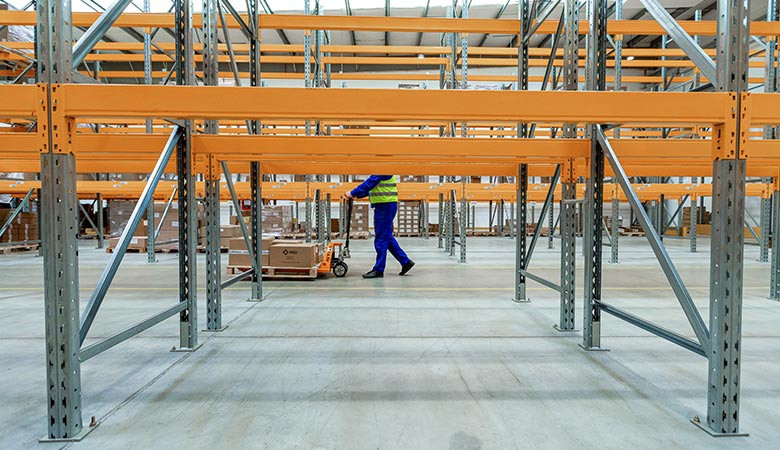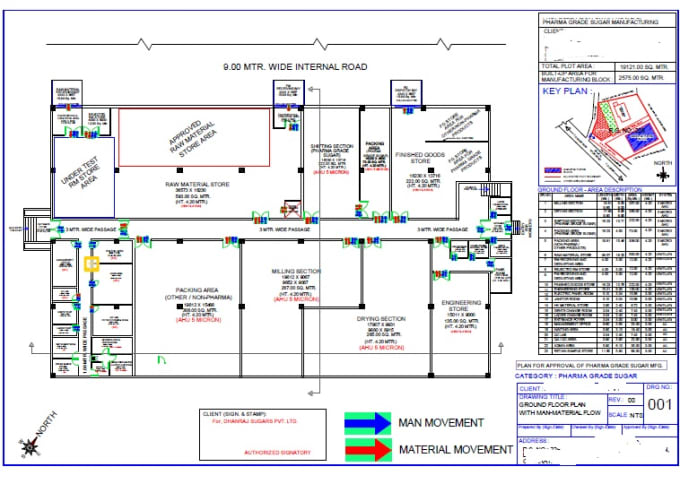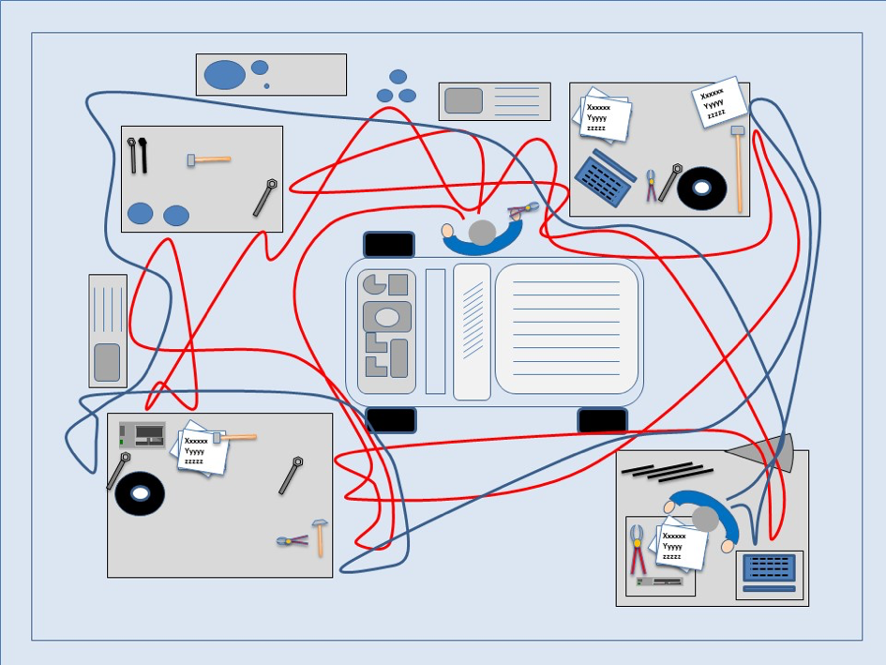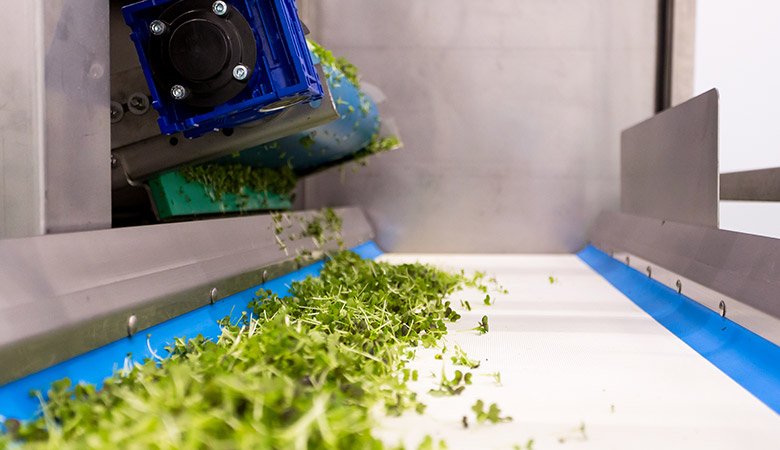Gestão / Artigos
Boa disposição: a importância de um layout empresarial
O desenho de um layout empresarial tem como missão otimizar a disposição de pessoas e materiais, garantir a eficiência das operações e evitar acidentes. Estas são algumas das boas práticas a seguir.

 12 minutos de leitura
12 minutos de leitura
2021-11-04 14:58:13
O desenho de um layout empresarial tem como missão otimizar a disposição de pessoas e materiais, garantir a eficiência das operações e evitar acidentes. Estas são algumas das boas práticas a seguir.
O layout empresarial é essencial para as operações gerais de uma empresa, e garante um fluxo uniforme de pessoas, material e informação. Descubra o que é exatamente e como criar um layout produtivo.
O que é o layout empresarial?
O layout empresarial engloba a disposição de pessoas, materiais (matérias-primas, produto acabado e em curso), máquinas e ferramentas, de forma que criem um sistema único e funcional.

Entre as várias vantagens de um layout otimizado, destacam-se as seguintes:
- Aumenta o nível de segurança. A primeira prioridade ao desenhar um layout empresarial é projetar um espaço seguro, que reduza a probabilidade de acidentes. É por isso que muitas fábricas separam o fluxo de materiais e de pessoas, ou colocam as cargas mais pesadas mais perto do solo.
- Melhora a ergonomia. As doenças músculo-esqueléticas são a principal causa de dor, desconforto e incapacidade a nível mundial. Um layout ajustado é mais ergonómico e contribui para um ambiente de trabalho mais seguro, feliz e produtivo.
- Aumenta a produtividade. Todos os processos têm gargalos, pontos onde o ritmo de produção é menor do que nas operações anteriores ou subsequentes. Os gargalos são causados por baixa capacidade das máquinas, espaço de armazenamento inadequado ou baixa produtividade por parte dos operadores. Tudo isso pode ser superado com um layout eficiente.
- Minimiza atrasos na produção. Um layout adequado elimina causas de atrasos como falta de espaço, longos movimentos de materiais e quebras pelo caminho.
- Melhora a comunicação. O layout empresarial é determinante na interação entre as pessoas e pode ajudar a construir boas relações de trabalho, aumentar o fluxo de informações e melhorar a comunicação.
- Otimiza o espaço disponível. Numa fábrica, cada centímetro quadrado é valioso. Um layout ajustado é a melhor forma de rentabilizar a área disponível.
- Eleva o controlo de qualidade. Para garantir a qualidade, a inspeção deve ser realizada em diferentes estágios de fabrico. Um layout ideal deve permitir a inspeção em vários locais para garantir um melhor controle de qualidade.
- Melhora a supervisão. Um bom layout empresarial é o primeiro passo para uma boa supervisão. É mais fácil ter uma visão global do espaço e da posição de cada pessoa e estar perto de quem precisa de apoio.
Como rever o layout empresarial em 7 passos
É possível rever um layout empresarial de forma prática, com estes 7 passos.
1. Analise o estado atual com um mapa “Spaghetti”
Como em qualquer outra transformação, o primeiro passo é avaliar o estado atual. No caso de uma mudança de layout, poucas ferramentas são tão eficazes e visuais como o diagrama Spaghetti.

Este diagrama representa todas as deslocações que um operador tem de efetuar para executar uma determinada tarefa e pode ser construído através de observação, durante algum tempo. O resultado mostra os metros percorridos e o tempo despendido para executar a tarefa.
Este mesmo exercício pode ser repetido a qualquer nível de detalhe – desde as deslocações de camiões entre cidades, a porta-paletes dentro da fábrica, operadores entre postos de trabalho ou micro deslocações de uma única pessoa. Tendo calculada a distância percorrida, é possível definir um objetivo de redução de deslocações para o layout futuro.
2. Abordagem Top Down
O layout de qualquer espaço deve ser planeado por níveis hierárquicos – do mais macro ao micro.
- A visão macro deve incidir na posição dos principais blocos ou áreas (receção, expedição, etc) e a relação entre elas;
- A visão micro vai ao detalhe do layout de cada estação de trabalho e a localização dos equipamentos e mesas de trabalho.
Esta abordagem reduz a complexidade do planeamento. Desta forma, o âmbito do planeamento é mais simples numa primeira fase, e pode envolver uma equipa mais alargada. Estando definidos os grandes blocos, a equipa pode avançar para um design mais fino com a visão global do puzzle já definida.
3. Desenhar para minimizar movimentos
Ao planear a disposição de equipamentos e máquinas num layout empresarial, o objetivo fundamental é minimizar os transportes internos. Um bom exemplo é a criação de células de trabalho com várias máquinas instaladas à volta do operador. Desta forma, uma única pessoa consegue gerir várias máquinas em simultâneo, com o mínimo de deslocações.
Um bom layout empresarial deve ser desenhado de forma minimizar os fluxos das famílias de produto de maior volume (unidades vendidas). Por exemplo, se a família de produto “A” é a que tem maior volume de vendas, então o layout deve ser otimizado a pensar nesta categoria em primeiro lugar. Só depois são considerados os movimentos de outras famílias de produtos. Mais uma vez, o objetivo é reduzir a complexidade associada ao desenho de layout.
No ramo alimentar e de retalho, a Somengil destaca-se pela qualidade no design e ergonomia existentes no equipamento de lavagem industrial: MultiWasher. Um armário facilmente adaptável ao espaço de produção e ao colaborador, permitindo que se possa lavar qualquer tipo de loiça (e.g. panelas, pratos, tabuleiros, carrinhos de supermercado e muito mais) num mesmo local, sem haver a necessidade de deslocações extra dentro da área de trabalho.
4. Fluxo de material unidirecional, entre a entrada e a saída
Um layout empresarial deve assegurar um fluxo de material unidirecional entre a entrada e a saída do espaço. A disposição dos postos de trabalho deve ser feita de forma que as primeiras tarefas sejam executadas mais perto da entrada ou armazém de matérias-primas. As últimas atividades devem estar perto da saída ou armazém de produto acabado.
O fluxo não precisa ser uma linha reta. Podem existir fluxos paralelos, padrões em forma de U ou mesmo um zigue-zague que termina com o produto acabado de regresso ao ponto de chegada. “Unidirecional” significa apenas que não devem existir cruzamentos entre material em diferentes estados de produção. Quando os materiais se movem contra ou através do fluxo geral, é natural que ocorram erros e até acidentes.
É por isso que na Somengil estudamos cada fluxo de trabalho, antes de propor uma solução de lavagem industrial. A nossa máquina de lavagem de última geração, a Multiwasher permite lavar qualquer utensílio ou ferramenta, com total flexibilidade. Desta forma, é a máquina que se ajusta ao processo e ao operador, e não o contrário.
5. Um local para cada coisa, cada coisa no seu local
O layout empresarial deve permitir o manuseio de materiais, produtos, equipamentos de forma ordenada e eficiente. No posto de trabalho, cada utensílio e ferramenta deve ter um local designado e um propósito. Apenas os materiais estritamente necessários devem estar presentes.
6. Simular, antes de implementar
Antes de implementar um novo layout, é importante simular. Para isso, é necessário construir um protótipo funcional com materiais de baixo custo – paletes, fita cola, cartão, giz.
Décadas antes da invenção do AutoCAD, foi exatamente isso que os irmãos McDonald fizeram. Passaram horas a desenhar o layout do restaurante que tinham idealizado num campo de ténis. Testaram cada iteração do projeto, com a ajuda de quem passava e se mostrava curioso. Esta abordagem prática identificou vários gargalos que teriam sido caros de alterar mais tarde, se tivessem esperado até que o restaurante fosse construído para testar as suas hipóteses.
O momento foi eternizado no filme “The Founder”.
7. Facilidade de expansão ou mudança futura
As instalações devem ser projetadas de modo a poderem ser facilmente expandidas ou ajustadas para atender às necessidades de produção em constante mudança. Qualquer projeto deve ser flexível, minimizando o tempo de setup sempre que for necessário fazer alterações aos espaços.
Somengil, parceiros das empresas que querem melhorar o layout empresarial
Na Somengil, desenhamos máquinas de lavar industriais de última geração para empresas preocupadas com a excelência operacional. Antes de cada instalação, estudamos o fluxo de trabalho para que a máquina se adeque às pessoas e processos, e não o contrário. A Multiwasher está disponível em vários tamanhos e pode ainda ser customizada às necessidades de cada instalação. A utilização é simples e ergonómica. Agende um webinar e veja a diferença.
Também pode gostar

Gestão / Artigos
Lean Manufacturing na indústria alimentar
O Lean Manufacturing ajuda as empresas na indústria alimentar a serem mais competitivas e inovadoras. Mas porque é que tantas empresas no setor t...
Postado em 2021-12-23

Gestão / Artigos
Análise SWOT: guia prático para fazer
A análise SWOT permite lançar um novo olhar para o seu negócio, de novas maneiras e direções. Descubra o potencial da análise SWOT e como fazer.
Postado em 2023-02-23

Gestão / Artigos
Cadeias de abastecimento sustentáveis: mito ou realidade?
Investir numa cadeia de abastecimento sustentável pode alterar o impacto ambiental de uma empresa, bem como os seus resultados.
Postado em 2024-07-11






















 Portugal
Portugal United Kingdom
United Kingdom United States
United States France
France Spain
Spain Germany
Germany Romania
Romania Italy
Italy Czech Republic
Czech Republic Finland
Finland Hungary
Hungary Slovakia
Slovakia Greece
Greece Lithuania
Lithuania South Korea
South Korea Russia
Russia Saudi Arabia
Saudi Arabia Poland
Poland Brasil
Brasil Hebrew
Hebrew